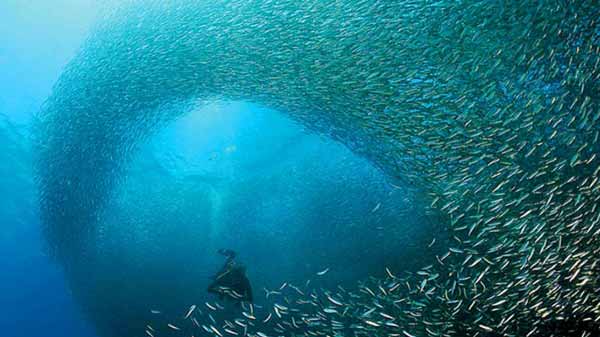
Pearl of the South: Cebu is a gateway to some of Asia’s greatest tropical adventures

Manila’s southern sister is nothing like her. Cebu is older, prettier and more relaxed. She doesn’t even speak the same language. Manila’s tongue is that of the northern Tagalog minority – the country’s official language despite having only 17 million native speakers. Cebuano, on the other hand, is spoken by 21 million and is known for its “hard tongue” sound and rough charm.
Where the capital of the Philippines is congested and heavily urbanised, Cebu city is just a dot on the eponymous province, which consists of a large main island and 167 surrounding islands. To the traveller with no time constraints, adventure awaits in each and every one of them.
All flights touch down at Mactan-Cebu International Airport, located on the smaller island of Mactan across from the main metropolis. Today Mactan is home to several luxury resorts, but historically it was a kingdom ruled by King Lapu-Lapu. The ruler was crowned a local hero after slaying the famous Portuguese explorer Ferdinand Magellan when he tried to conquer the island on behalf of the Spanish throne.
Gafencu’s top pick for a 5-star Filipino experience on Mactan is the well-established Plantation Bay Resort & Spa. With its classic wood furnishings and marble fittings, the colonial-style institution features one of the world’s largest privately-owned lagoons. Its name alludes to the Spanish cash crop plantations that several haciendero families made their fortunes from.

Myriad activities are on offer within Plantation Bay’s 11.4ha complex, from jet skiing and tennis to cycling and paddle boarding. If you’ve somehow managed to exhaust the in-house facilities, neighbouring islands offer plenty of opportunities for salty excursions, whether it’s diving, snorkelling or island hopping.
If you’re looking for more R&R, head to the award-winning Mogambo Springs spa for pampering. It remains open until 11pm, perfect for those late-night massage cravings. You’d be hard-pressed to find a better way to end the day than soaking in the warm, hydrotherapeutic pool. We swear by the spa’s hot stone massage, which can stop a cold in its tracks.

Extreme sport enthusiasts who crave adventure beyond Mactan’s comfortable paradise will find what they’re looking for in Badian. The canyoneering excursion begins in Alegria, a four-hour drive west of Mactan. You’ll need to don a helmet and life jacket for this guided journey through a 10km stretch of streams and waterfalls. The final destination can only be reached by jumping, swimming, climbing, floating, abseiling and even cliff diving your way through the rugged terrain. We promise that the chance to swim beneath Kawasan Falls is worth risking life and limb for, though. Set aside five hours for the entire experience, plus the travel time to get in and out of Kawasan.
Beyond Alegria, another one of southern Cebu’s gems is the municipality of Moalboal (25km north), famous for its sardine run, in which divers can swim with a million-strong school.

Northern Cebu, meanwhile, is harder to get to but potentially more rewarding. You would be leaving the bulk of mainstream tourists behind as you’re ferried off to an exotic shore of your choosing. Malapascua Island is legendary among divers for its thresher shark and manta ray encounters. Underneath its Gato Island lies a 35m tunnel that can be explored, but it’s not for the faint-hearted – reef and whitetip sharks are known to guard the entrance.
Going to Malapascua without diving would be a shame, so if you’re interested in learning, it’s the perfect place. You can book a Professional Association of Diving Instructors (PADI) course via travel tech start-up Trip Guru, among other activities in the Cebu region such as night diving, sunset cruises and kite surfing.
Non-divers won’t be stuck twiddling their thumbs, though. Visitors can snorkel above a shipwreck near Lighthouse Beach, take a leap of faith off Lapus Lapus cliff or lounge on the nearby Kalanggaman Island’s pristine sandbar.

Finally, we head to the busy hub of Cebu city, heart of the richest province in the Philippines. For unobstructed views of city lights cast upon a black sky, take a mountain bike (or taxi) before dusk to Tops Lookout at Mt Busay’s peak. If hiking is more your speed, look up Osmeña Peak – the highest mountain in Cebu, situated 80km from the centre.
By the time you head back to the airport in Mactan, both your belly and camera will be full. Chances are you’ll have had plenty of interaction with the jolly natives of the south, who once belonged to tribes that tattooed their warriors from neck to ankle. As for you, your markings will be the contagious smile you’ve picked up from the locals, as well as a few tan lines to show off back home.
Text: Julienne C. Raboca










